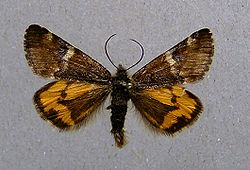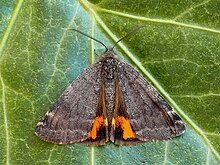| Archiearinae | |
|---|---|
 | |
| Archiearis parthenias | |
| Scientific classification | |
| Domain: | Eukaryota |
| Kingdom: | Animalia |
| Phylum: | Arthropoda |
| Class: | Insecta |
| Order: | Lepidoptera |
| Family: | Geometridae |
| Subfamily: | Archiearinae D. S. Fletcher, 1953 |

Archiearinae is a subfamily of the geometer moth family (Geometridae). It was described by David Stephen Fletcher in 1953.